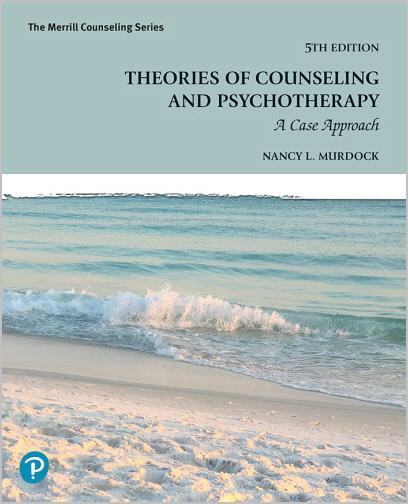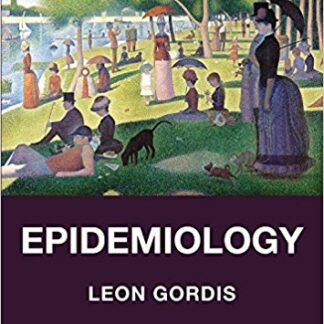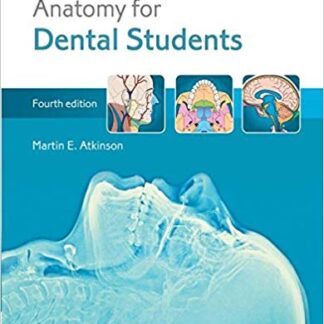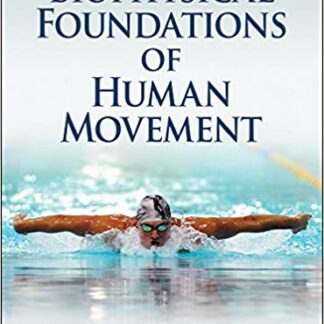Description
Theories of Counseling and Psychotherapy: A Case Approach 5th Edition by Nancy Murdock, ISBN-13: 978-0138170462
[PDF eBook eTextbook] – Available Instantly
- Publisher: Pearson; 5th edition (May 14, 2024)
- Language: English
- 688 pages
- ISBN-10: 0138170460
- ISBN-13: 978-0138170462
Theories of Counseling and Psychotherapy uses case studies, applied examples and original source material to succinctly elucidate 15 of the most influential and ground-breaking theories of psychotherapy and counseling. This helpful guide examines the historical roots, evaluations, and lasting effects of Existential, Gestalt, Behavioral, Cognitive, Reality, Feminist, Family, Narrative and Solution-Focused Therapy theories and much more. You’ll learn how historical theory has contributed to modern practice and ways that you can apply it in your own professional counseling experience. The 5th Edition is thoroughly updated to provide modern, evidence-based context for each theoretical approach, new applications with diverse clients, and new psychotherapy outcome research.
Table of Contents:
About the Author
Preface
New to this Edition
Why I Wrote this Book
The Theories I Chose
My Philosophy
Acknowledgments
Brief Contents
Contents
Chapter 1 Theory Is a Good Thing
Learning Objectives
What Is Theory?
What Is Psychotherapy?
Why Bother with Theory?
Theory Is Fun
Theory Works
Theory Is Essential to Human Life
Counselors Who Don’t Use Theory May Get Lost
Your Task: Find Your Map
Characteristics of Good Theory
Precision and Testability
Empirical Support
Parsimony
Stimulation
Practicality
So How Do I Choose a Theory?
What About Me?
What about My Client? Issues of Diversity, Equity, and Social Justice
How to Use Theory
Ethics: The Role of Professional Values and Standards
Client Welfare
Informed Consent
Confidentiality
Competence
Multiple Relationships
The Critical Question: How to Decide?
How Theory Is Presented In this Text
A Case Study
Overview
Basic Philosophy
Human Motivation
Central Constructs
Theory of the Person and Development of the Individual
Health and Dysfunction
Nature of Therapy
Assessment
Overview of the Therapeutic Atmosphere
Roles of Client and Counselor
Goals
Process of Therapy
Therapeutic Techniques
Evaluation of the Theory
Qualities of the Theory
Research Support
Issues of Diversity
The Case Study
Summary
Another Resource for Learning to Use Theory
In Closing
Chapter 2 Psychoanalysis
Learning Objectives
Overview
Basic Philosophy
Human Motivation
Central Constructs
Instinct Theory
Topographic Model: The Iceberg Approach
Structural Model: The Big Three
Repression
Symptoms as Symbols
Defense Mechanisms
Theory of the Person and Development of the Individual
Health and Dysfunction
Nature of Therapy
Assessment
Overview of the Therapeutic Atmosphere
Roles of Client and Counselor
Goals
Process of Therapy
Insight
Resistance
Transference
Countertransference
Phases of Therapy
Opening Phase
Development of Transference
Working Through
Resolution of the Transference
Therapeutic Techniques
Free Association
Interpretation
Analysis of the Resistance
Dream Analysis
Analysis of the Transference
Evaluation of the Theory
Qualities of the Theory
Precision and Testability
Empirical Support
Research Support
Outcome Research
Theory-Testing Research
Issues of Diversity
The Case Study
Summary
Chapter 3 Neoanalytic Approaches
Learning Objectives
Overview
Ego Psychology: ID Loses the Limelight Temporarily
Overview
Central Constructs
Structural Model
Defenses
Conflict-Free Sphere
Average Expectable Environment
Theory of the Person
Health and Dysfunction
Nature of Therapy
Assessment
Overview of the Therapeutic Atmosphere and Roles of Client and Counselor
Goals
Process of Therapy
Therapeutic Techniques
Object Relations: The Lego Approach
Overview
Central Constructs
Objects
Attachment as a Fundamental Need
Projection
Introjection
Splitting
Projective Identification
Theory of the Person and Development of the Individual
Health and Dysfunction
Nature of Therapy
Assessment
Overview of the Therapeutic Atmosphere and Roles of Client and Counselor
Goals
Process of Therapy
Therapeutic Techniques
Self Psychology—It’s All About Me
Overview
Central Constructs
Selfobject
Disintegration Anxiety
Theory of the Person and Development of the Individual
Health and Dysfunction
Nature of Therapy
Assessment
Overview of the Therapeutic Atmosphere and Roles of Client and Counselor
Goals
Process of Therapy
Therapeutic Techniques
Relational Psychoanalysis
Overview
Central Constructs
Self
Relational Matrix
Drive Theory
Anxiety
Theory of the Person and Development of the Individual
Health and Dysfunction
Nature of Therapy
Assessment
Roles of Client and Counselor
Goals
Process of Therapy
Therapeutic Techniques
Evaluation of Neoanalytic Approaches
Qualities of the Theory
Research Support
Outcome Research
Theory-Testing Research
Issues of Diversity
The Case Study
Summary
Chapter 4 Individual Psychology
Learning Objectives
Overview
Basic Philosophy
Human Motivation
Central Constructs
Lifestyle
Social Interest
Inferiority Feelings
Basic Tasks
Basic Mistakes
Theory of the Person and Development of the Individual
Health and Dysfunction
Nature of Therapy
Assessment
Formal Assessment
Informal Assessment
Overview of the Therapeutic Atmosphere
Roles of Client and Counselor
Goals
Process of Therapy
Therapeutic Techniques
Interpretation
Encouragement
Natural and Logical Consequences
Acting as If
Pushing the Button
Catching Oneself
Creating Images
Pleasing Someone
Paradoxical Intention
Evaluation of the Theory
Qualities of the Theory
Precision and Testability
Empirical Support
Research Support
Outcome Research
Theory-Testing Research
Social interest
Birth order
Early recollections
Lifestyle
Issues of Diversity
The Case Study
Summary
Chapter 5 Person-Centered Therapy
Learning Objectives
Overview
Basic Philosophy
Human Motivation
Central Constructs
Experience
Actualizing Tendency
Organismic Valuing Process
Self
Self-Actualizing Tendency
Need for Positive Regard and Self-Regard
Conditions of Worth
Theory of the Person and Development of the Individual
Health and Dysfunction
Nature of Therapy
Assessment
Overview of the Therapeutic Atmosphere
Roles of Client and Counselor
Goals
Process of Therapy
Congruence
Unconditional Positive Regard
Empathy
A Fourth Condition?
Stages of the Therapeutic Process
Stage 1
Stage 2
Stage 3
Stage 4
Stage 5
Stage 6
Stage 7
Therapeutic Techniques
Evaluation of the Theory
Qualities of the Theory
Precision and Testability
Empirical Support
Research Support
Outcome Research
Theory-Testing Research
Issues of Diversity
The Case Study
Summary
Chapter 6 Existential Therapy
Learning Objectives
Overview
Basic Philosophy
Human Motivation
Central Constructs
Modes of Being
Anxiety
The Ultimate Concerns
Death
Freedom
Meaning
Isolation
Defenses
Theory of the Person and Development of the Individual
Health and Dysfunction
Nature of Therapy
Assessment
Overview of the Therapeutic Atmosphere
Roles of Client and Counselor
Goals
Process of Therapy
Therapeutic Techniques
Relationship and Presence
Questioning
Bracketing
Attention to Nonverbal Behavior
Self-Disclosure
Paradoxical Intention
Dereflection
Dream Analysis
Guided Fantasy
Evaluation of the Theory
Qualities of the Theory
Precision and Testability
Empirical Support
Research Support
Outcome Research
Theory-Testing Research
Issues of Diversity
The Case Study
Summary
Chapter 7 Gestalt Therapy
Learning Objectives
Overview
Basic Philosophy
Human Motivation
Central Constructs
Contact
Needs
Polarities
Contact Disturbance
Theory of the Person and Development of the Individual
Health and Dysfunction
Nature of Therapy
Assessment
Overview of the Therapeutic Atmosphere
Roles of Client and Counselor
Goals
Process of Therapy
Therapeutic Techniques
Experiments
Therapist Self-Disclosure
Dialogues
Playing the Projection
Exaggeration
Reversals
Dream Work
Awareness Training or Bodywork
Evaluation of the Theory
Qualities of the Theory
Precision and Testability
Empirical Support
Research Support
Outcome Research
Theory-Testing Research
Issues of Diversity
The Case Study
Summary
Chapter 8 Behavior Therapy
Learning Objectives
Overview
Basic Philosophy
Human Motivation
Central Constructs
Classical Conditioning
Operant Conditioning
Observational Learning
Theory of the Person and Development of the Individual
Health and Dysfunction
Nature of Therapy
Assessment
Overview of the Therapeutic Atmosphere
Roles of Client and Counselor
Goals
Process of Therapy
Therapeutic Techniques
Relaxation Training
Exposure Therapy
Systematic Desensitization
Shaping
Reinforcement
Extinction
Punishment
Social and Communication Skills Training
Stimulus Control
Modeling
Evaluation of the Theory
Qualities of the Theory
Precision and Testability
Empirical Support
Research Support
Outcome Research
Theory-Testing Research
Issues of Diversity
The Case Study
Summary
Chapter 9 Rational Emotive Behavior Therapy
Learning Objectives
Overview
Basic Philosophy
Human Motivation
Central Constructs
ABCs
Beliefs
Goals
Human Worth Ratings and USA
Secondary Disturbances
Theory of the Person and Development of the Individual
Health and Dysfunction
Nature of Therapy
Assessment
Overview of the Therapeutic Atmosphere
Roles of Client and Counselor
Goals
Process of Therapy
Therapeutic Techniques
Disputing
Bibliotherapy
Proselytizing
Recordings
Reframing
Stop and Monitor
Rational Coping Statements
Rational Emotive Imagery
Flamboyant Therapist Actions
Humor
Role Playing
Reinforcements and Penalties
Skill Training
In Vivo Desensitization
Acting on Rational Beliefs
Homework
Shame Attacking
Evaluation of the Theory
Qualities of the Theory
Precision and Testability
Empirical Support
Research Support
Outcome Research
Theory-Testing Research
Issues of Diversity
The Case Study
Summary
Chapter 10 Cognitive Therapy
Learning Objectives
Overview
Basic Philosophy
Human Motivation
Central Constructs
The Cognitive Model
Schemas
Beliefs
Automatic Thoughts
Modes
Theory of the Person and Development of the Individual
Health and Dysfunction
Nature of Therapy
Assessment
Overview of the Therapeutic Atmosphere
Roles of Client and Counselor
Goals
Process of Therapy
Therapeutic Techniques
Questioning
Downward Arrow
Thought Recording
Behavioral Experiments
Activity Scheduling
Graded Tasks
Problem Solving
Imagery
Role Playing and Other Behaviorally Oriented Techniques
Identifying Adaptive Beliefs, Boosting Positive Emotion, and Identifying Values and Aspirations
Evaluation of the Theory
Qualities of the Theory
Precision and Testability
Empirical Support
Research Support
Outcome Research
Theory-Testing Research
Issues of Diversity
The Case Study
Summary
Chapter 11 Reality Therapy
Learning Objectives
Overview
Basic Philosophy
Human Motivation
Central Constructs
Basic Needs
Quality World
Total Behavior
Choice Theory
Theory of the Person and Development of the Individual
Health and Dysfunction
Nature of Therapy
Assessment
Overview of the Therapeutic Atmosphere
Roles of Client and Counselor
Goals
Process of Therapy
Therapeutic Techniques
Questioning
Bibliotherapy
Doing the Unexpected
Reframing
Humor
Self-Disclosure
Metaphors
Physical Activity and Meditation
Allowing or Imposing Consequences
Evaluation of the Theory
Qualities of the Theory
Precision and Testability
Empirical Support
Research Support
Outcome Research
Theory-Testing Research
Issues of Diversity
The Case Study
Summary
Chapter 12 Feminist Therapy
Learning Objectives
Overview
Basic Philosophy
Human Motivation
Central Constructs
Gender
The Personal Is Political
Theory of the Person and Development of the Individual
Health and Dysfunction
Nature of Therapy
Assessment
Overview of the Therapeutic Atmosphere
Roles of Client and Counselor
Goals
Process of Therapy
Therapeutic Techniques
Gender-Role and Power Analysis
Self-Disclosure
Assertiveness Training
Bibliotherapy
Evaluation of the Theory
Qualities of the Theory
Precision and Testability
Empirical Support
Research Support
Issues of Diversity
The Case Study
Summary
Chapter 13 Family Systems Theory
Learning Objectives
Overview
The Satir Approach
Overview
Central Constructs
Self-Esteem
Self Mandala
Communication
Primary Triad
Family Rules
Theory of the Person and Development of the Individual
Health and Dysfunction
Nature of Therapy
Assessment
Overview of the Therapeutic Atmosphere and Roles of Client and Counselor
Goals
Process of Therapy
Therapeutic Techniques
Family Sculpting
Communication Analysis
Therapist Communications
Family Thermometer
Parts Party
Structural Family Therapy
Overview
Central Constructs
Family Structure
Subsystems
Boundaries
Theory of the Person and Development of the Individual
Health and Dysfunction
Nature of Therapy
Assessment
Overview of the Therapeutic Atmosphere and Roles of Client and Counselor
Goals
Process of Therapy
Therapeutic Techniques
Enactment
Reframing
Focusing
Achieving Intensity
Boundary Making
Unbalancing
Directives
Strategic Therapy
Overview
Central Constructs
Communication
Hierarchies
Theory of the Person and Development of the Individual
Health and Dysfunction
Nature of Therapy
Assessment
Overview of the Therapeutic Atmosphere and Roles of Client and Counselor
Goals
Process of Therapy
Therapeutic Techniques
Directives
Reframing
Working with Hierarchical Problems
Bowen Family Systems Theory
Overview
Central Constructs
Differentiation of Self
Chronic Anxiety
Triangles
Emotional Distance
Sibling Position
Theory of the Person and Development of the Individual
Health and Dysfunction
Nature of Therapy
Assessment
Overview of the Therapeutic Atmosphere and Roles of Client and Counselor
Goals
Process of Therapy
Therapeutic Techniques
Evaluation of the Family Systems Approaches
Qualities of the Theory
Research Support
Outcome Research
Theory-Testing Research
Issues of Diversity
The Case Study
Summary
Chapter 14 Solution-Focused Therapy
Learning Objectives
Background
Basic Philosophy
Human Motivation
Central Constructs
Exceptions
Solution Focused Conversation
Strengths and Resources
Theory of the Person and Development of the Individual
Health and Dysfunction
Nature of Therapy
Assessment
Overview of the Therapeutic Atmosphere
Roles of Client and Counselor
Goals
Process of Therapy
Therapeutic Techniques
Questions
Normalizing the Problem
Compliments
Miracle Question
Scaling Questions
Asking about the Problem
Externalizing
First Session Formula Task
Generic Task
Breaking Patterns
Surprise Task
Write, Read, and Burn
Structured Fight
Do Something Different
Evaluation of the Theory
Qualities of the Theory
Precision and Testability
Empirical Support
Research Support
Issues of Individual and Cultural Diversity
The Case Study
Summary
Chapter 15 Narrative Therapy
Learning Objectives
Overview
Basic Philosophy
Human Motivation
Central Constructs
Stories
Thinness and Thickness
Unique Outcomes
Theory of the Person and Development of the Individual
Health and Dysfunction
Nature of Therapy
Assessment
Overview of the Therapeutic Atmosphere
Roles of Client and Counselor
Goals
Process of Therapy
Therapeutic Techniques
Questioning
Double Listening
Outsider Witness Practices
Written Artifacts
Evaluation of the Theory
Qualities of the Theory
Precision and Testability
Empirical Support
Research Support
Outcome Research
Theory-Testing Research
Issues of Individual and Cultural Diversity
The Case Study
Summary
Chapter 16 Mindfulness Approaches
Learning Objectives
Overview
Acceptance and Commitment Therapy
Overview
Central Constructs
Acceptance
Being Present
Cognitive Defusion
Self as Context
Values
Commitment
Mindfulness
Theory of the Person and Development of the Individual
Health and Dysfunction
Nature of Therapy
Assessment
Overview of the Therapeutic Atmosphere and Roles of Client and Counselor
Goals
Process of Therapy
Therapeutic Techniques
Metaphor
Mindfulness Techniques
Cognitive Defusion Techniques
Values Work
Dialectical Behavior Therapy
Overview
Central Constructs
Dialectics
Emotion Regulation
Theory of the Person and Development of the Individual
Health and Dysfunction
Nature of Therapy
Assessment
Overview of the Therapeutic Atmosphere and Roles of Client and Counselor
Goals
Process of Therapy
Therapeutic Techniques
Core Mindfulness Skills
Distress Tolerance Skills
Emotion Regulation Skills
Four Categories of Treatment Strategies
Core strategies
Dialectical strategies
Making lemonade out of lemons
Entering the paradox
Stylistic or communication strategies
Case management strategies
Evaluation of Mindfulness Approaches
Qualities of the Theory and empirical support
Research Support
ACT
DBT
Issues of Diversity
The Case Study
Summary
Chapter 17 Conclusion
Learning Objectives
Is this a Good Theory?
Empirical Support
Stimulating
Practical
Your Philosophical Assumptions
Your Beliefs About Human Behavior
Your Personal Style: Approach and Technique
The Role of Your Clients: Diversity Is Here to Stay
Eclectic and Integrative Approaches to Psychotherapy
The Contextual Model
Conclusion
References
Name Index
Subject Index
Nancy Murdock is Emeritus Professor of Counseling Psychology at the University of Missouri-Kansas City, in Kansas City, Missouri. Dr. Murdock is the author of numerous publications in the areas of psychotherapy process and Bowen family systems theory as well as the book Couple and Family Therapy: A Case Approach (2022). A fellow of the American Psychological Association, she has served as the president of the Society for the Advancement of Psychotherapy (Division 29 of the American Psychological Association), Vice President for Education and Training of the Society for Counseling Psychology (Division 17 of the APA), and as chair of the Council of Counseling Psychology Training Programs. In her many years at UMKC, Dr. Murdock served as chair of the Division of Counseling and Educational Psychology, director of the doctoral program in Counseling Psychology, and program coordinator for the Master’s program in Counseling. She lives on a lake with her canine companion Roxie, occasionally venturing out to compete in International Latin ballroom competition.
What makes us different?
• Instant Download
• Always Competitive Pricing
• 100% Privacy
• FREE Sample Available
• 24-7 LIVE Customer Support




